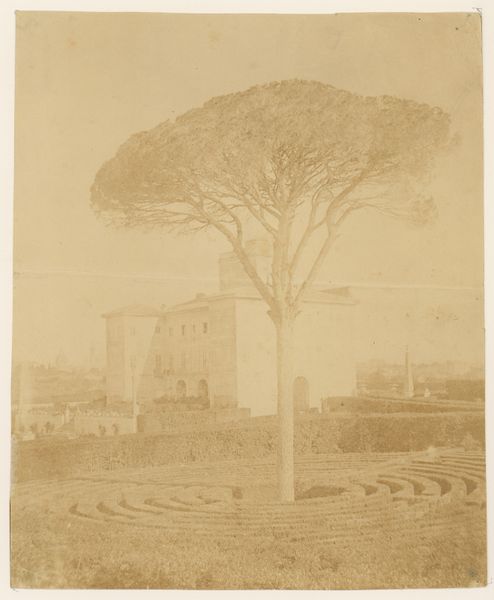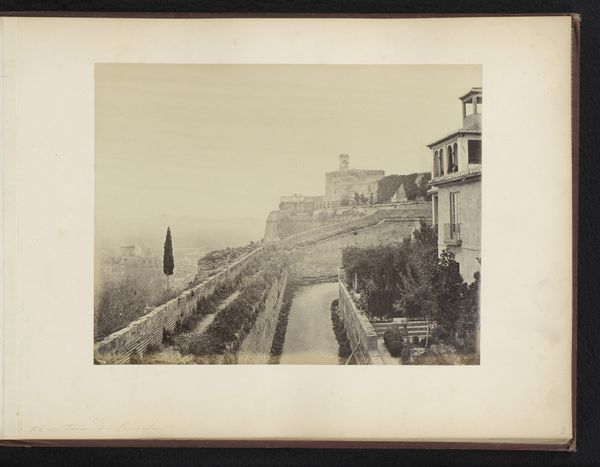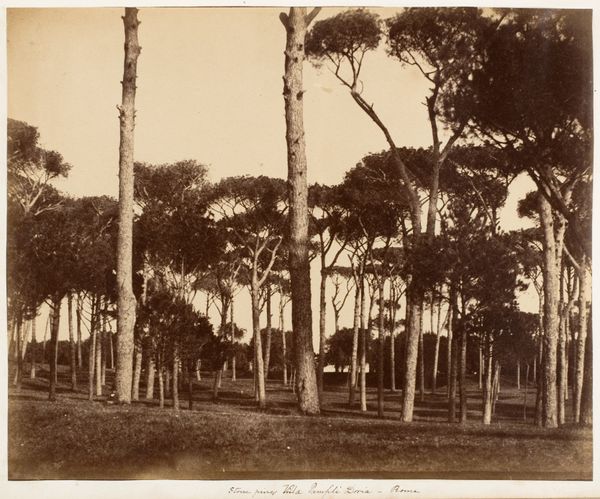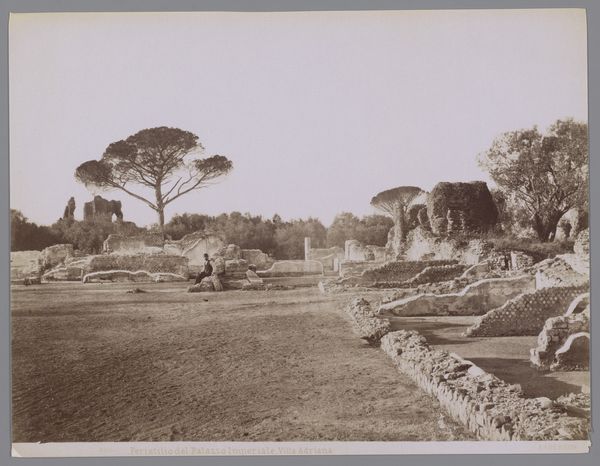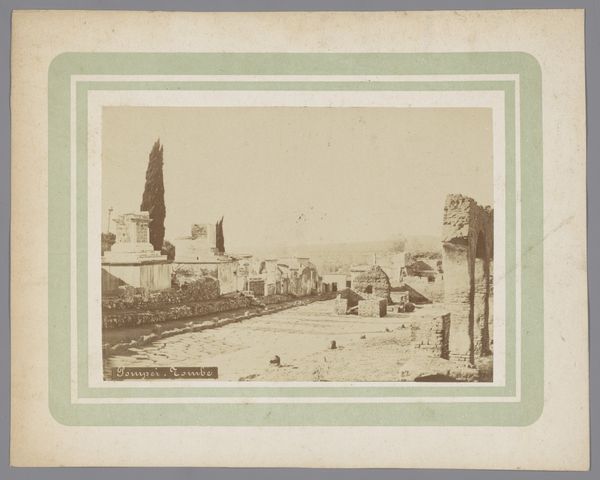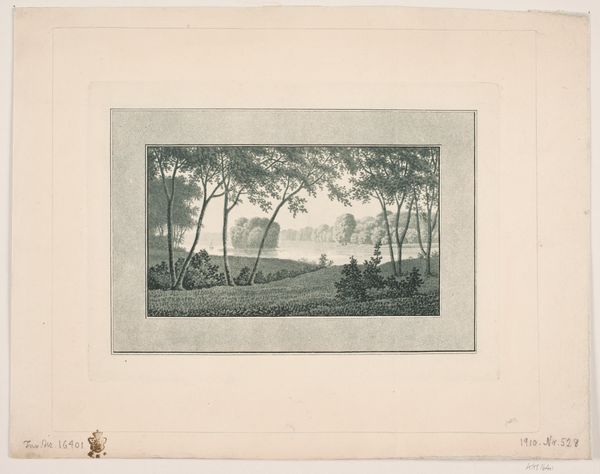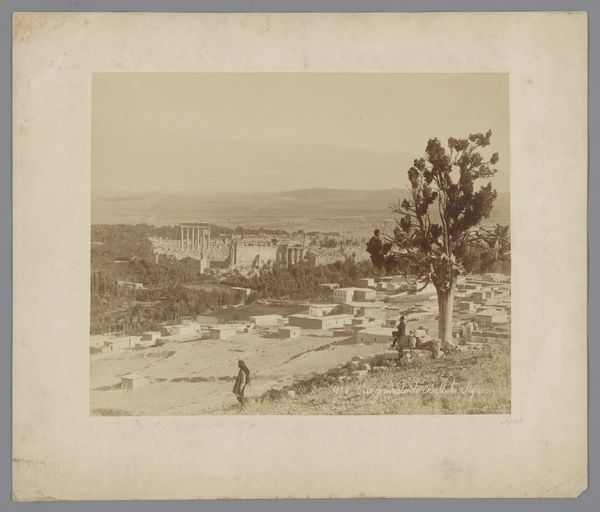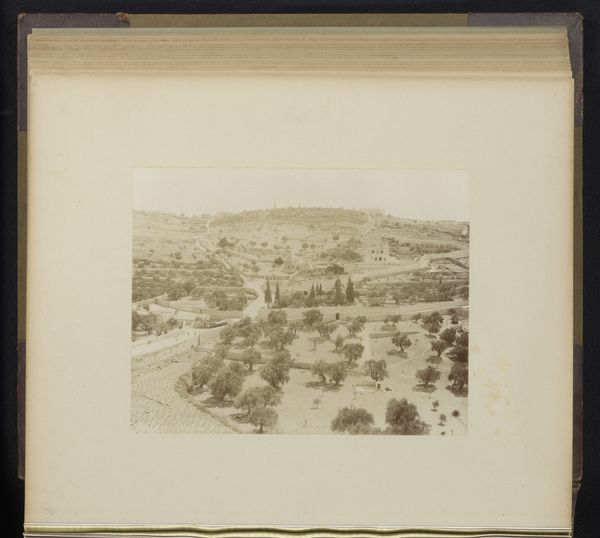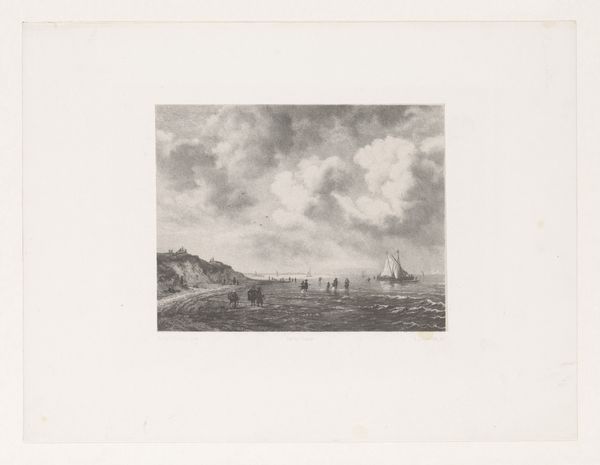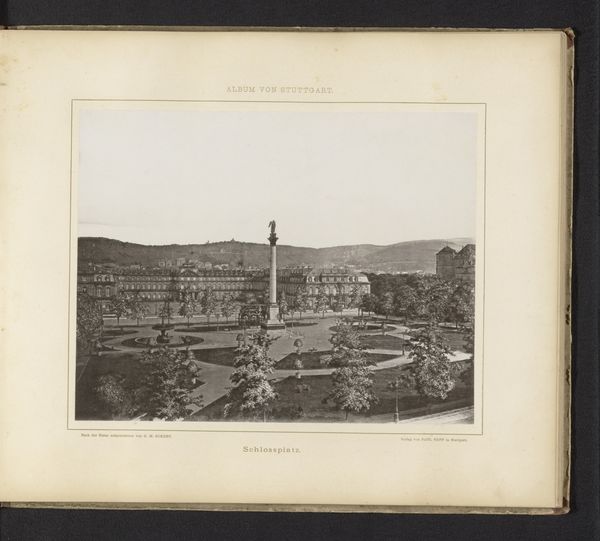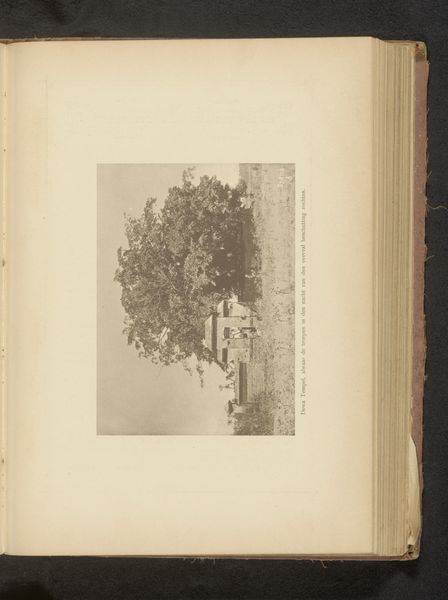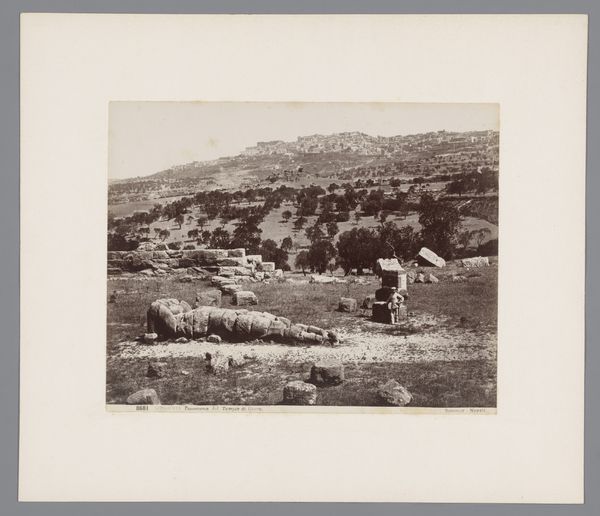
Gezicht op de Via Appia Nuova nabij Rome, met op de achtergrond de ruïnes van de Aqua Claudia before 1907
0:00
0:00
Dimensions: height 200 mm, width 250 mm
Copyright: Rijks Museum: Open Domain
Curator: Oh, what a compelling sense of stillness. It reminds me of old postcards. Editor: Yes, isn’t it evocative? What we're looking at is a gelatin silver print, titled "Gezicht op de Via Appia Nuova nabij Rome, met op de achtergrond de ruïnes van de Aqua Claudia." It translates to "View of the Via Appia Nuova near Rome, with the ruins of the Aqua Claudia in the background," taken before 1907. Curator: The layering is amazing, the foreground dark, and the background just disappearing. Almost like memory itself, some things vividly in view and others dissolving with time. Is that Pictorialism at work? Editor: Precisely. The image uses pictorialist techniques, seen through soft focus, imbuing a painterly quality, distancing it from straightforward realism even as it records a recognizable scene. It strives not merely to document but to evoke a mood. Curator: That explains the almost elegiac atmosphere. There's a palpable tension between nature and the relics of empire. How does this dialogue inform our understanding of the Via Appia’s symbolism? Editor: Roman roads were not just infrastructural; they served as a stage for power, civic life, and, of course, military advance. The Via Appia embodies Roman ambition and architectural prowess, with the Aqua Claudia as a monumental testament to engineering skill, reduced now to romantic ruin. To photograph them together evokes reflection on empire and ephemerality. Curator: The tall, umbrella-shaped trees along the roadside could represent resilience. Life persists along this ancient path as history unfolds. There's an interesting dialectic there. Editor: I agree, an intriguing dialogue between transience and permanence, change and enduring heritage, all carefully mediated through photographic technique. The image creates a space to meditate on continuity and discontinuity, not just in Rome, but perhaps in any place touched deeply by history. Curator: Beautifully said. I hadn't considered the universal relevance. The photograph really captures not just a place, but a feeling, an echo of past grandeur against a whisper of present life. Editor: Indeed. I walk away from this pondering not only Rome's past but also the very nature of time and how we relate to it through the places we inhabit.
Comments
No comments
Be the first to comment and join the conversation on the ultimate creative platform.
